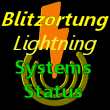Posts: 1
Threads: 1
Joined: 2023-09-30
Hello,
How should I set up sending data from the region: Europe 2,3, Africa, Asia, Japan, South America?
At the beginning, when starting the device, it worked for me for about 2 years, now it doesn't anymore...
I send data only from the area: Europe 1, /Server 1/
thanks for the info ...
Funsat ID: 2474
Posts: 1,717
Threads: 62
Joined: 2013-07-23
2023-10-01, 18:38
(This post was last modified: 2023-10-01, 18:41 by cutty.)
(2023-10-01, 15:44)funsat1 Wrote: Hello,
How should I set up sending data from the region: Europe 2,3, Africa, Asia, Japan, South America?
---~~---
thanks for the info ...
Funsat ID: 2474 You don't choose which servers process your data... Some stations send enough data for signals outside their 'geographic' or 'primary' regions that other 'region' computations may be acquired. 'Regions' with limited stations operating may receive support from stations in other regions, and as density grows, outside stations may be dropped, as no longer needed. Europe 1 is your primary region, and apparently at this point in time your signals are not directed by the receiving server to any computing servers other than the primary.
Sometimes we forget that this is a network system, not a stand alone localized receiver. The network configures for best LOCATING globally, and as such regional 'assignments' outside the primary will vary at times.
Posts: 32
Threads: 5
Joined: 2019-04-11
Hi Cutty
Admitting that some detectors only cover a single part of their coverage area, why are two detectors located in the same geographic location, one with its area reduced to a single server (Europe 1) and the other not has there been any change of zone (Europe 1, 2, 3)?
When I look at the detectors in my country, only one has had this reduction in processing!!! Worse, detectors which are very little active in their primary region are suddenly assigned to Europe, Africa, America zones while their detection satistics are almost non-existent!!!!
According to your answer which for me hides a data saving problem, therefore financial on the
B.O network...
Wouldn't the solution based on your answer be to limit the reception coverage of each detector, which would allow the collaborative network that we are to have equality in the processing of data....
FRANCE --- RED S2401--- BLUE S2783
Stations: 2401, 2783
Posts: 1,717
Threads: 62
Joined: 2013-07-23
(2023-10-04, 06:05)MTO-Mareuil Wrote: Hi Cutty
Admitting that some detectors only cover a single part of their coverage area, why are two detectors located in the same geographic location, one with its area reduced to a single server (Europe 1) and the other not has there been any change of zone (Europe 1, 2, 3)?
When I look at the detectors in my country, only one has had this reduction in processing!!! Worse, detectors which are very little active in their primary region are suddenly assigned to Europe, Africa, America zones while their detection satistics are almost non-existent!!!!
According to your answer which for me hides a data saving problem, therefore financial on the
B.O network...
Wouldn't the solution based on your answer be to limit the reception coverage of each detector, which would allow the collaborative network that we are to have equality in the processing of data....
I don't know the specific answers... I do know that 'regional' data assignments DO vary as network varies. And to the best of my knowledge, that 'computational' assignment is more or less 'manual'. For Blitzortung signals, with some experimental or 'adjunct' sub-networks ('regions') all are routed to ONE / or TWO (backup-standby) receiving server, then from there to one or more 'computing' servers (regions). This is always subject to some change for various reasons.
Yes - from day one, it was known that 'best' signature data would be collected if stations were 50km apart, with H field range of <150km or so, because beyond that the ground wave and space wave components of the discharge were pretty much gone or distorted badly.... beyond that it's what's returned from the 'sky wave' contained in the 'earth ionosphere waveguide' which gradually loses the shorter duration ('higher frequency') impulse components, including the 'descriptive' segments of the discharge / return strokes,(TOA) and some of the 'group' pulses necessary for TOGA.
As stations came online in areas outside the 'original' Europe network, the low number of stations in those areas required 'outside' support to 'detect' strokes, so the original intent was 'some stations' with good quality 'longer' range in Europe (1) would also report to the 'newer' Africa count, for signals in that area. Over time, as number grew, or as stations came online with better 'data' 'up-time' over all they may switch in and out of 'extra-region' support... but they should always report to their 'home region' ...
Those 'supporting' station signals are of course NOT sending optimal data for a specific 'out of area' stroke, but even a 'sombrero' signal can help with assigning the 'signal' as a 'stroke', or even 'locating', though with a high deviation potential.
I've one station here in KY assigned to Europe and Africa... PROBABLY to help with Atlantic area detection, rather than 'locating'. Blue 1439. My two reds only operate in the two NA regions.
![[Image: 1023FktWxList.png]](https://frankfortweather.us/blitzMisc/1023FktWxList.png)
|





![[Image: 1023FktWxList.png]](https://frankfortweather.us/blitzMisc/1023FktWxList.png)